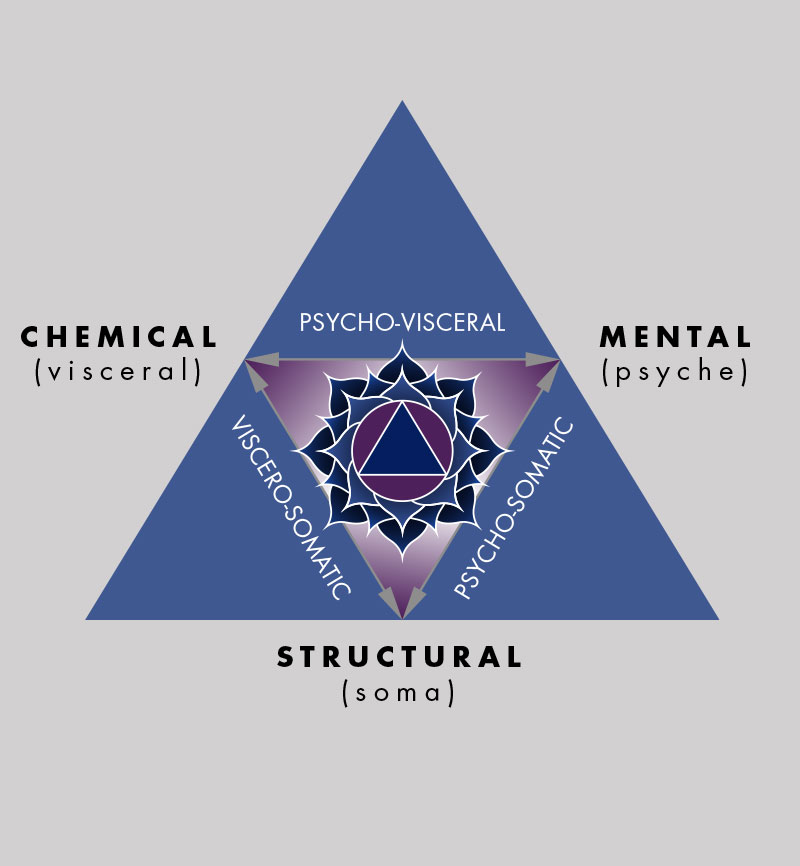
Clinical Kinesiology
THE CLINICAL KINESIOLOGIST
The chiropractic or “clinical kinesiologist” is a licensed physician unlike a kinesiologist in the fitness industry. Training in this specialty happens primarily at the post-doctoral level. Clinical and applied kinesiologists are mostly chiropractors, but many medical osteopathic doctors, psychologists/psychiatrists, dentists, and naturopathic doctors also use kinesiology in their related fields.
WHAT IS KINESIOLOGY?
Kinesiology is the use of specific muscle testing techniques to discover and give solutions for functional health issues. Most people think of chiropractors as back and joint doctors because of our connection to the spine and central nervous system, but the health complaints we see in the specialization of kinesiology are much more varied. While we don’t test, treat, or cure diseases with medicine as in allopathy, the process of eliminating functional interference or deficiency with conservative care, such as chiropractic, nutrition, and meridian (acupressure) and soft tissue therapy, can eliminate the symptoms and help the body heal with its own resources. The chiropractic kinesiologist, in fact, has a perfect scenario for success in healing because of the variety of tools at her or his disposal. Dr. Chrisman tells patients that if there is a conservative, non-medical answer for their problems, he will work to find it! Clinical kinesiologists aim to help patients avoid surgery and eliminate the need for medications and medical intervention.
HOW DOES KINESIOLOGY WORK?
The complaints we see stem from a combination of relationships which are demonstrated by the “Triad of Health” graphic at the top of this section. The triad of health demonstrates the three main areas of our mind-body that we can focus on:
- The structural aspect of the body (soma)
- Mental, emotional or stress-related influences (psyche)
- Chemical or nutritional health which involves the function of organs, glands and tissues (viscera)
The graphic demonstrates the different relationships between these three sides and the deep way that one side affects the others. It is rare that just one side of the triangle is affected, and so we have psycho-somatic, psycho-visceral, and viscero-somatic functional relationships that frequently need attention. Doing the necessary work of repairing these relationships in regard to your specific pain or problem corrects the underlying causes and frequently exceeds patients’ expectations of symptom relief and restoration of performance. The optimal function of the body happens when all three of these areas are in balance individually and with each other.
EXAMPLE OF IMBALANCE
One of the best examples of these relationships is the patient with lower back pain stemming from weak adrenals caused by stress. The emotional, mental or physical stress we experience in life taps into the resources of certain hormones and neurotransmitters produced by various organs, specifically the adrenal glands in this example. The adrenals are small glands on top of the kidneys that have a profound and immediate influence on our ability to handle stress, especially in fight or flight situations when we need to act fast. They are related to muscles in our legs and hips (through the viscero-somatic connection) that help us run away from trouble or to stand and fight. Over time, chronic stress of all types will tap the resources of the adrenals. The glands themselves will go through several stages of stress, distress, and exhaustion until they can no longer keep up with the demands on the body. When this happens, the muscles in the legs and hips (mentioned before) will stop working at their full capacity via the viscero-somatic relationship described above.
This makes us prone to imbalanced joints, injury, and degeneration of bones and soft tissues such as intervertebral disks and ligaments. Back pain frequently develops as a result of this combination of problems. In fact, due to the weakening of these muscles, the resulting imbalance in the lower back can actually put pressure on spinal disks and nerves exiting the spine and create more problems in the future in the tissues at the end of those nerves. A clinical kinesiologist can look at these problems in a holistic way and do what is necessary to deal with the functional deficiencies to prevent a lifetime of difficulty. Note that the goal here is not to treat or cure diseases but to put the body in a position to heal itself. Remove the interference, supply the need, and the body will heal itself!
STRUCTURE: Chiropractic, muscle activation, acupressure, postural correction or re-education
CHEMICAL: Nutrition, herbs, detoxification and purification, whole food diet plans
MENTAL: Emotion, stress hormones, meditation, psyche
Learn more about:

Muscle Testing Explained
BENEFITS OF MUSCLE TESTING
This technique of analysis is growing daily and many more practitioners are finding the advantage of quickly surveying the body without unnecessary expense or penetration. The enlivening achieved through this approach is exciting to experience in your own body. It creates an interest in finding weaknesses before they manifest as conditions or diseases, and this is truly a form of prevention.
Using muscle testing employs upper motor pathways in the nervous system, which are theorized to be weakened when the body is challenged. This results in widespread muscular weakness, identified by any single muscle or group of muscles. Type A muscle fiber contraction requires a significant amount of energy to contract, and this is why any distraction to the system can weaken the muscles.
HOW DOES IT WORK?
Using the muscle system as a barometer, this technique analyzes the various meridians and contact points located upon these pathways for the integrity of energy flow. When the practitioner touches one of the surface contact reflex points they are introducing energy into that system as a challenge to the system integrity. If the strength of that point remains when it is challenged it may be interpreted that the system or function associated is energized and potent. When a reflex point tests weak or is defeated by the challenge it is interpreted that there is a loss of energy and adequacy about that system. It should be noted that a weakness can never be equated to a diagnosis of a disease or a condition, so that if the lever tests weak it could never be said that the liver is sick (e.g. hepatitis, cirrhosis, inflammation, etc.), only that the system is lacking the energy to resist the challenge test.
Weaknesses are interpreted as areas of need, areas wherein the body may require cleansing, strengthening or repair. Clinically, after one-to-three months of nutritional support, specific for the target system or organ which is identified as weak, the reflex point no longer can be defeated by a challenge test. Usually, there is an improvement in the individual’s state of health and symptoms associated with that particular function in the body. There are many ways to strengthen a particular weakness, such as nutritional supplementation to enhance function in the specific area of need, lifestyle modification to unburden the physiology, chiropractic to influence the nervous tone and energy reaching the tissue, acupuncture to remove blockages to the normal flow of energy through the meridian pathways of the body, mind/body therapies to release somatized memory and others.
HISTORY OF MUSCLE TESTING
The muscle testing exam performed in this office is a compilation of techniques taught by pioneers in this field from Dr. Richard Versendaal to Dr. George Goodheart and many others over the past sixty years. System Strength Analysis (SSA) is a type of testing that provides a great deal of information about the energized status of the body and its various organs, glands, and systems without having to penetrate the skin or use invasive techniques. The degree of accuracy is remarkable and best seen in the results achieved, and the speed of that achievement, by experienced practitioners in this approach.
